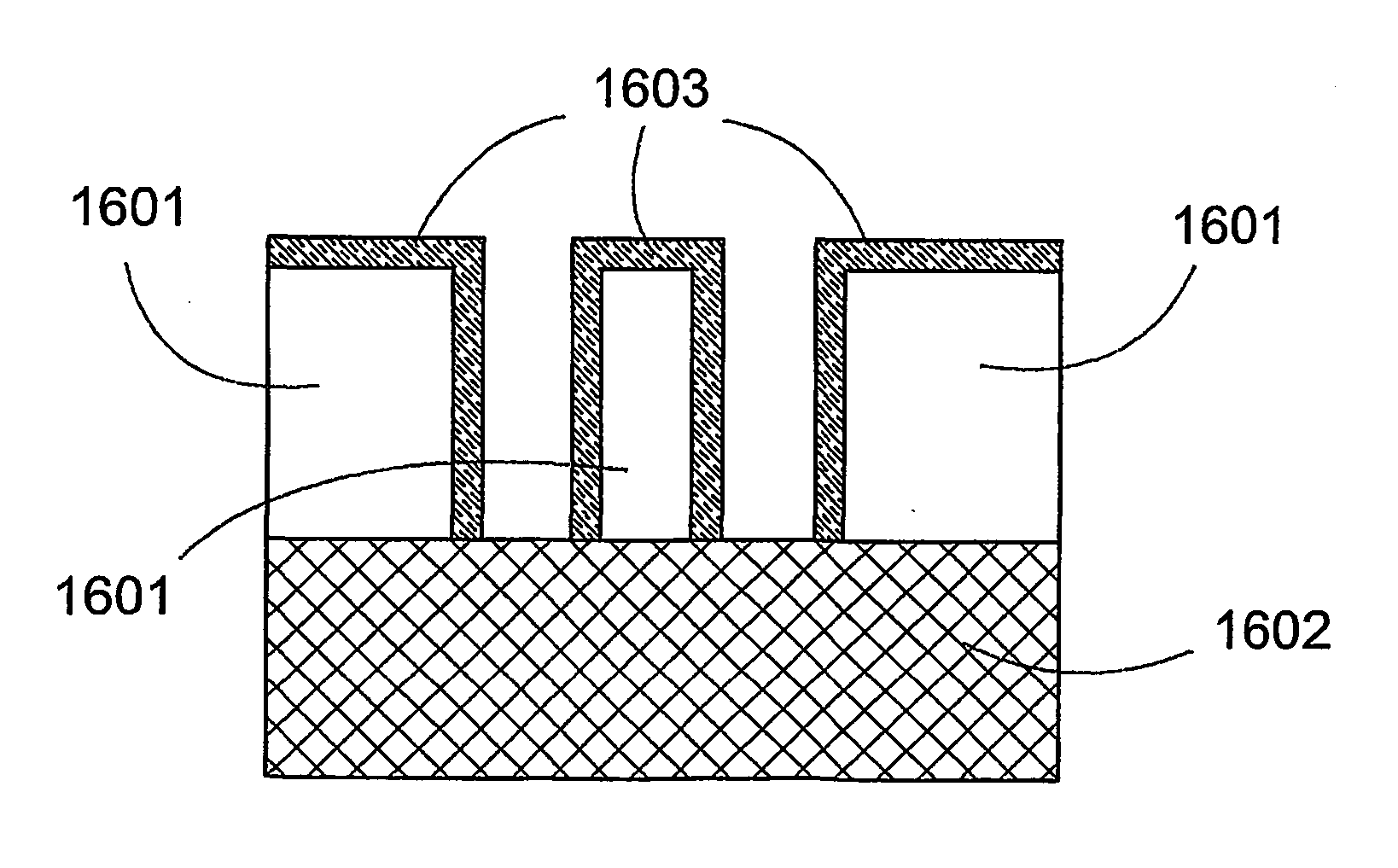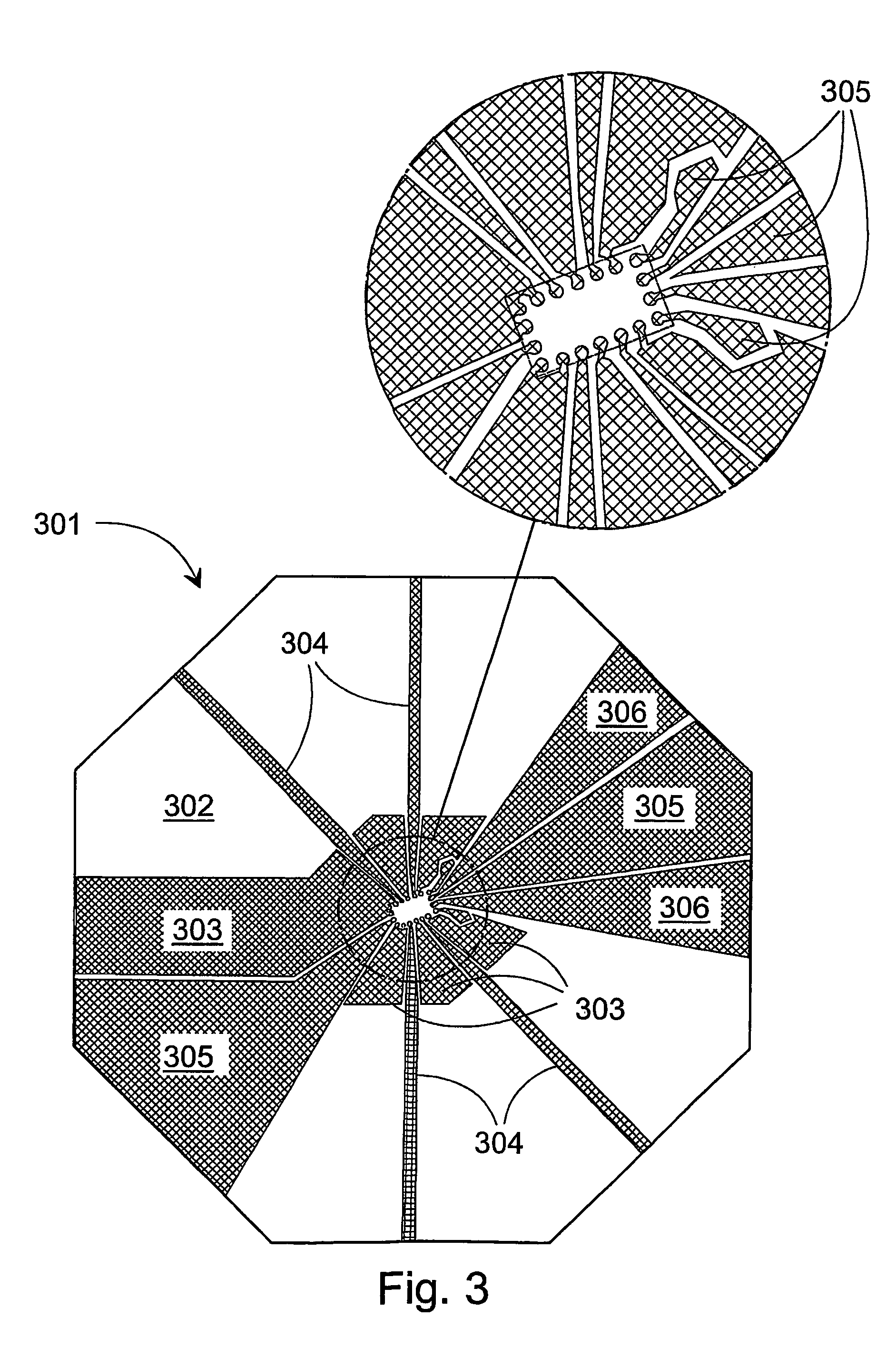High frequency integrated circuit (hfic) microsystems assembly and method for fabricating the same
a microsystem and integrated circuit technology, applied in the direction of pulse technique, instrumentation, semiconductor/solid-state device details, etc., can solve the problems of complex infrastructure, difficult handling of pcbs, and packaging itself, and achieve cost-effective manufacturing, minimal transmission line loss, and improved interface
- Summary
- Abstract
- Description
- Claims
- Application Information
AI Technical Summary
Benefits of technology
Problems solved by technology
Method used
Image
Examples
Embodiment Construction
[0033] High frequency integrated circuit (HFIC) assembly may be used, e.g. in a conventional microwave package assembly or high performance subassembly in a printed circuit board (PCB) or it may itself form a PCB like structure, which eliminates most hazardous materials from the assembly process making it an environmentally friendly alternative for IC assembly purposes. This assembly may contain one or more chips and it can be single or multilevel structure.
[0034]FIGS. 1 through 7 shows how one HFIC chip assembly can be formed and FIGS. 8 through 10 shows how HFIC assembly can be realized in a conventional microwave package structure, as a subassembly in a PCB board or can be realized as a PCB board itself.
[0035]FIGS. 1 through 3 presents main parts of the assembly, which contains a HFIC chip 103, the first substrate 201, the second substrate 301 and the third substrate 101. FIG. 1 shows the functional part 102 of the third substrate 101 and a HFIC chip 103. FIG. 2 shows the funct...
PUM
| Property | Measurement | Unit |
|---|---|---|
| Height | aaaaa | aaaaa |
| Electrical conductivity | aaaaa | aaaaa |
| Electrical conductor | aaaaa | aaaaa |
Abstract
Description
Claims
Application Information
 Login to View More
Login to View More - R&D
- Intellectual Property
- Life Sciences
- Materials
- Tech Scout
- Unparalleled Data Quality
- Higher Quality Content
- 60% Fewer Hallucinations
Browse by: Latest US Patents, China's latest patents, Technical Efficacy Thesaurus, Application Domain, Technology Topic, Popular Technical Reports.
© 2025 PatSnap. All rights reserved.Legal|Privacy policy|Modern Slavery Act Transparency Statement|Sitemap|About US| Contact US: help@patsnap.com



